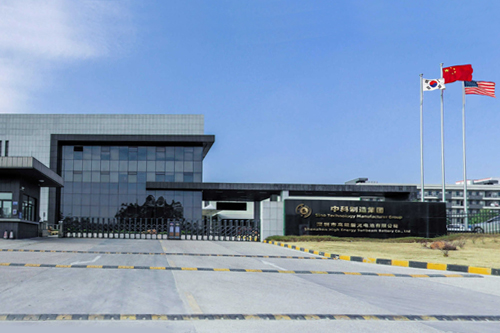Analysis of International Power Storage Technology - NiMH battery pack
I. Technical Principle
Lithium-ion batteries are divided into two categories: liquid lithium-ion batteries (LIBs) and polymer lithium-ion batteries (PLBs). It uses lithium-containing compounds as positive electrodes, such as binary or ternary materials such as lithium cobalt oxide (LiCoO2), lithium manganese oxide (LiMn2O4) or lithium iron phosphate (LiFePO4); the negative electrode uses lithium-carbon intercalation compounds, such as graphite, soft carbon, hard carbon, lithium titanate, etc.; the electrolyte is composed of lithium salts dissolved in organic carbonates. Its working principle is shown in Figure 6. When charging, lithium atoms become lithium ions and migrate to the carbon pole through the electrolyte. After the carbon pole combines with external electrons, it is stored as lithium atoms. The whole process is reversible when discharging.
Compared with other traditional batteries, lithium-ion batteries have the advantages of high specific energy, high rated voltage, strong high current discharge capacity, high power tolerance, and low self-discharge rate. Its specific energy (200Wh/kg) is about 5 times that of lead-acid batteries, the single-cell operating voltage is 3.7V or 3.2V, the cycle life can reach 3000~5000 times in shallow charge and discharge mode, and the energy storage efficiency can reach more than 90%. However, lithium-ion batteries have poor overcharge/discharge resistance, complex combination and protection circuits, and relatively high costs compared to traditional batteries such as lead-acid batteries. These factors restrict the application of lithium-ion batteries in the field of large-scale power and energy storage batteries. With the development of new energy vehicles, renewable energy and distributed power station technologies, the application of lithium-ion batteries in new energy vehicles, renewable energy access and small distributed power stations has received more and more attention.
2. Key technologies
Electrode materials are important key technologies for lithium-ion batteries, which are closely related to battery cost and performance. Cobalt-acid lithium-ion batteries have been abandoned for high-power and high-capacity applications due to their expensive materials and poor safety. Lithium manganate batteries have the advantages of low cost and high performance, and their product safety is higher than that of lithium cobalt oxide batteries. They are a popular alternative technology for electric vehicle batteries. Lithium iron phosphate batteries have a relatively stable oxidation state, good safety performance, good high temperature performance, and are non-toxic, pollution-free, with a wide range of raw material sources and low prices. They are currently one of the most popular electric vehicle battery technologies and one of the popular candidate technologies for power energy storage systems. Regarding lithium-ion batteries for large-scale energy storage, the key technologies also include battery system overall design technology, battery system integration and grouping technology, battery pack testing technology, etc.
3. Application Status
The concept of lithium-ion batteries was proposed in the 1960s, when Bell Labs developed a carbon anode that could replace lithium metal electrodes, making this idea a reality. Since Sony successfully commercialized lithium-ion batteries in 1991, lithium-ion batteries have been widely used in the field of electronic products. In recent years, with the development of materials and battery technology, the application of lithium-ion batteries in electric vehicles, energy storage batteries, and other fields has received more and more attention. At present, Sony, Sanyo (which has merged with Panasonic), Nissan AESC, Samsung SDI and LG Chem in Japan are vigorously developing lithium-ion manganese oxide batteries. In 2008, A123 in the United States took the lead in developing a 2MW lithium-ion energy storage battery, and Altair Nanotechnologies has established a 1MW/250kWh trailer-type lithium-ion battery energy storage system. At present, there are about 18MW lithium-ion battery energy storage systems connected to the grid in the world for engineering demonstration or grid services. Chinese companies represented by BYD, Lishen, and BAK have actively invested in the research and development and production of lithium-ion batteries and have made good progress. During the Shanghai World Expo, the State Grid Corporation built a 100kW lithium-ion battery demonstration system connected to the grid. The Zhangbei National Wind Power Monitoring and Research Center, hosted by the State Grid Corporation Electric Power Research Institute and invested by the National Development and Reform Commission, plans to use 18MW lithium-ion batteries to test the use of energy storage for wind farm power generation and its grid access. The Southern Power Grid has built a 4MW lithium-ion battery energy storage demonstration power station, whose important function is to shift peaks and fill valleys.
IV. Development Trends
In the research of lithium-ion batteries, it is important to improve the performance of battery electrodes and electrolytes by controlling the size, composition, structure and morphology of particles. In the research of electrode materials, it is important to combine with carbon coating technology to reduce electrochemically active materials to submicron or smaller sizes to achieve core-shell electrodes. Other new technologies, including nano-alloy negative electrode lithium-ion batteries, silicon-based lithium-ion batteries, organic electrode material lithium-ion batteries, and lithium-air batteries have also emerged.
Read recommendations:
LR20
batteries aaa.US scientists develop new button photovoltaic cells
What should be paid attention to when assembling lithium batteries
21700 battery wholesaler
battery aaa alkaline











































 360° FACTORY VR TOUR
360° FACTORY VR TOUR
 Whatsapp
Whatsapp
 Tel
Tel Email
Email TOP
TOP